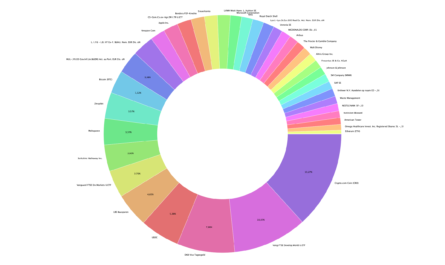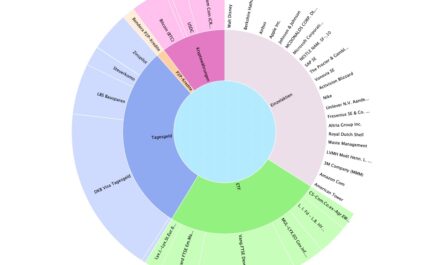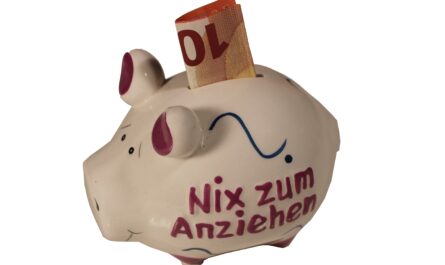The fact that a funded pension would be implemented during the current legislative period of the traffic light coalition in order to finally make the fragile and ailing pension system fit for the future made us confident when reading the coalition agreement of the SPD, the Greens and the FDP – especially considering that a later net pension of 2,000 euros would remain out of reach for many. But the stock pension will now come differently than originally planned.
Originally, the FDP had planned in its election program for the 2021 Bundestag elections – led by Johannes Vogel – to take its cue from its EU neighbor Sweden. Sweden does not rely on a purely pay-as-you-go model, but builds on several pillars. In addition to the traditional pension contribution, Swedish employees pay 2.5% of their gross income into a pension fund that invests broadly in the capital market and is managed by the state.
The fund has been able to grow in recent years not only due to the steady payments made by Swedish contributors, but also due to increases in value on the stock markets, although recently there have been more shares than returns. However, the Swedes did not have to worry about their pensions because of the second pillar and the pay-as-you-go system. Over the long term, the capital stock has even grown by an average of 8%.
Original plans envisaged payments via salaries
For Germany, the FDP proposal called for 2% of the employer’s gross salary to be invested in such an equity fund organized by the state in the future. Employers and employees would each pay 1%. For both, this would not have meant an increase in contribution rates, but it would have been a cut for the German pension insurance, whose rate would have been lowered by two percentage points. This would have put an additional burden on the already struggling system.
According to the current plans of the German government, the share pension will become generational capital and thus more of a share reserve than a genuine share pension. Already in the coalition agreement, one looked in vain for the word “stock pension.” Although a stock fund is to continue to exist, its earnings are not to be used to increase later pension payments, but merely to keep contribution rates stable. In view of demographic change and, above all, the low pension levels of low- to average-income earners, this is unlikely to be really effective in avoiding later social explosions.
According to Finance Minister Christian Lindner (FDP), the first money from the fund should flow into stabilization in 2038. Until then, the liberal wants to pay in 10 billion euros annually, although so far only the first 10 billion for 2023 is considered certain – the governing coalition still has to reach a final agreement. Ideally, the fund would be worth around 150 billion euros in 2038. The plan is more along the lines of the Norwegian sovereign wealth fund – only without revenue from the oil industry and financed by additional taxpayers’ money.
More of a support than an increase in the pension quota
This means that the traffic light system will forego monthly inflows from employers and employees. Instead, the payments will be charged to the federal budget in the future, which means that additional money will have to be borrowed for this item. The German pension insurance system is already supported by additional tax money of around 100 billion euros per year. This sum will be further increased by the generational capital.
According to Reinhold Thiede, head of the social policy working group at DRV Baden-Württemberg, it would actually take a good 17 billion euros for the generational capital to prevent the contribution rate from rising. Assuming a good return of 8% per year, the fund volume would have to be around 215 billion euros. This means that the planned 10 billion euros would only be a drop in the bucket, and the benefit could even evaporate completely because the capital would be eaten up in bad years.
In view of the composition, it will not be possible to achieve such a return anyway, because the German sovereign wealth fund is to be based on the existing KENFO fund. This was set up in a foundation in 2017 to be able to finance the final disposal of nuclear waste and the dismantling of corresponding power plants over 80 years. It was launched with around 24 billion euros – paid in by the energy suppliers. The KENFO fund provides for a share quota of just 30% and specifies a target return of just under 4% per year.
… but even that will be difficult
Without capital depletion, only 3% could be withdrawn from the fund each year. This means that Lindner would need a fund volume of an impressive 570 billion euros by 2038 to be able to collect the annual 17 billion without having to adjust the contribution rate upward by a single percentage point. In return, a return of a lush 18% p.a. would be necessary to reach the desired target capital in 15 years – which is also more than unrealistic.
Thus, the generational capital – as it is planned now – has problems to stabilize the pension contributions at all, not to mention to increase the pension amounts for future generations. The FDP’s former equity pension has been punished by the traffic lights into a rotten compromise that will not bring any improvement in the long term.
So once again it remains to be said: Whoever does not want to have any financial worries in old age must not rely on state benefits under any circumstances and must always take personal responsibility, make additional provisions…
Keyfacts:
- the share pension comes quite differently
- instead of payments via salaries, tax money flows in
- …this is an additional burden on the federal budget
- it is more a reserve, than a pension
- instead of increasing pensions, only the contribution rates are to be stabilized
- but even the planned 10 billion euros per year are not enough for this purpose
- … it would have to be at least 17 billion euros
- … or the sovereign wealth fund would have to make unrealistic returns
- However, the KENFO fund has a target return of only 3%.







